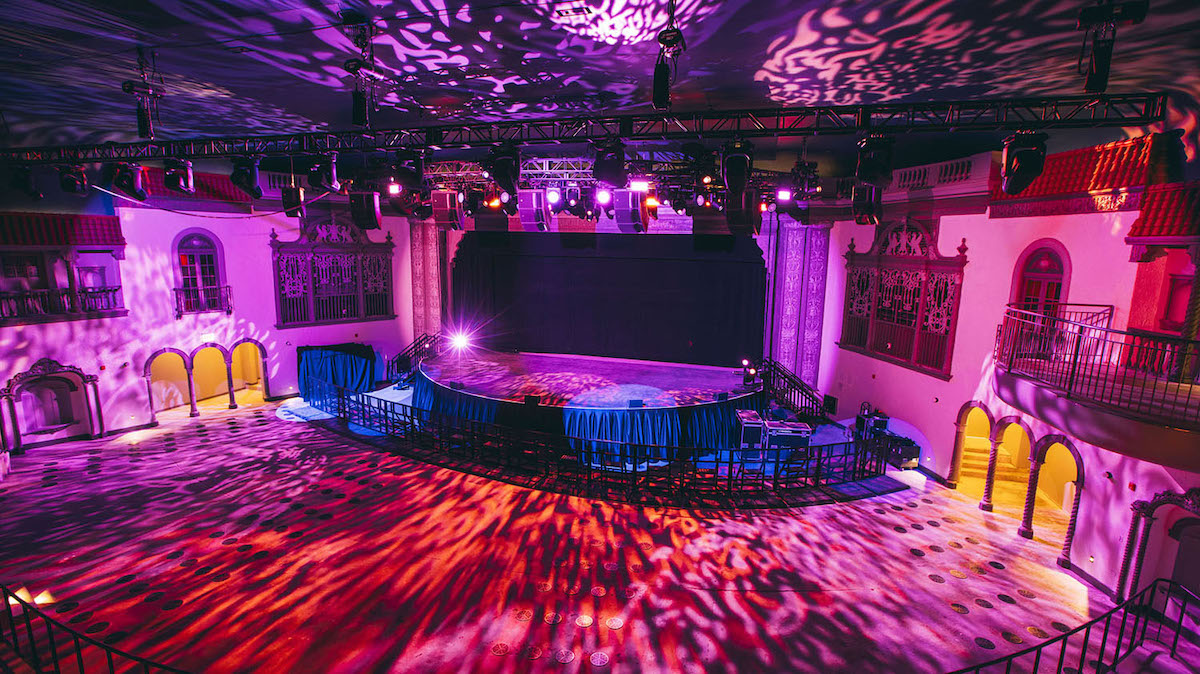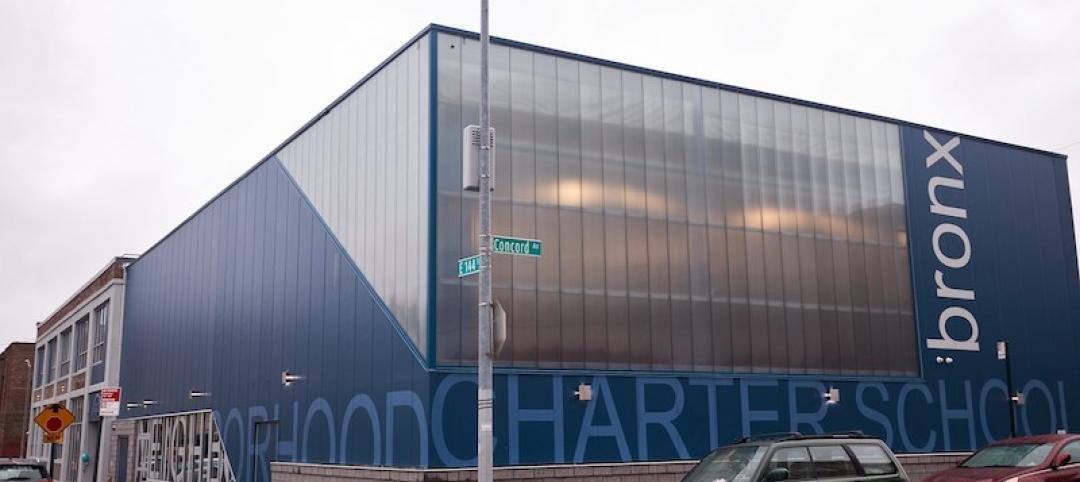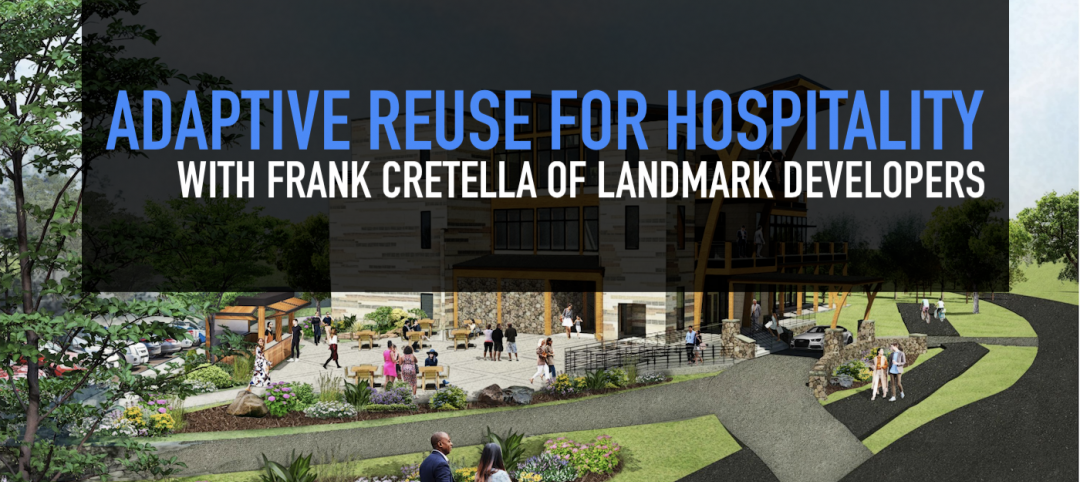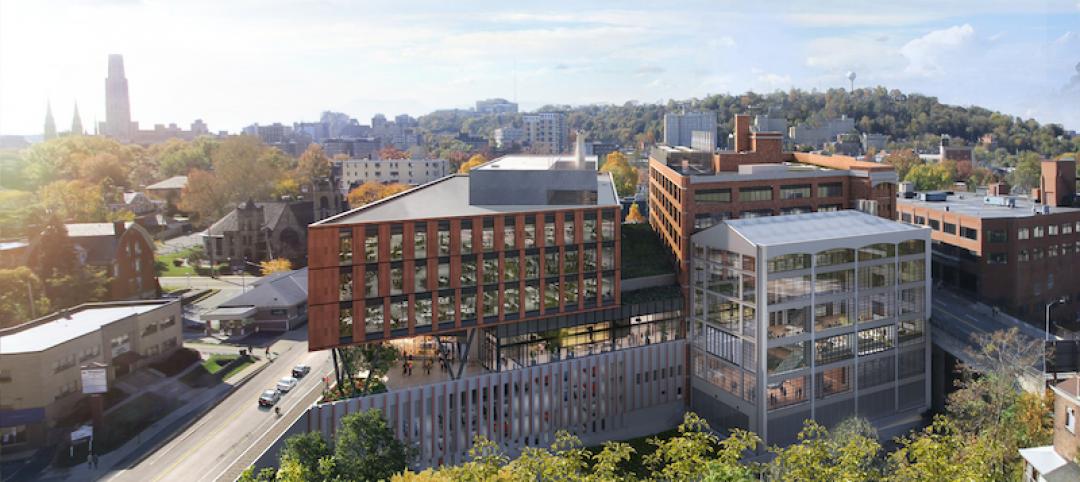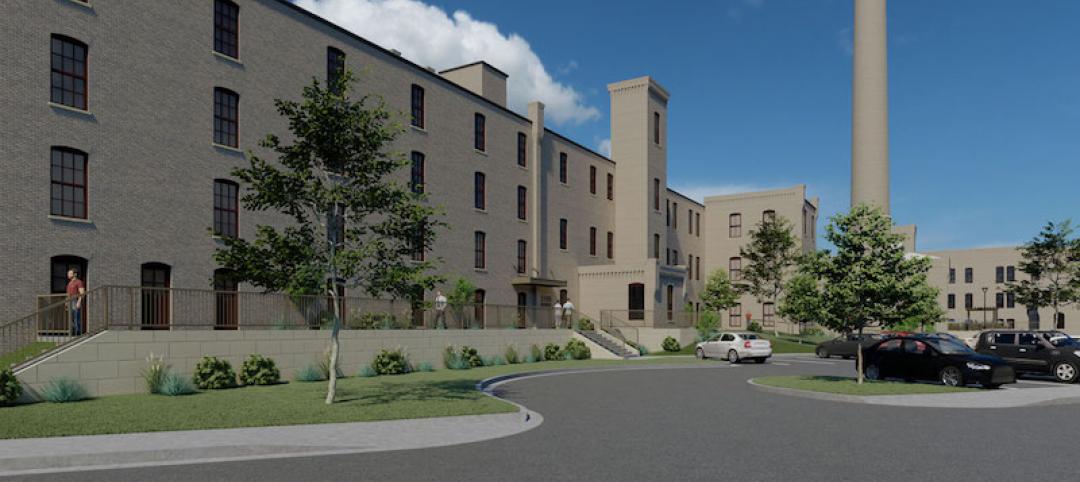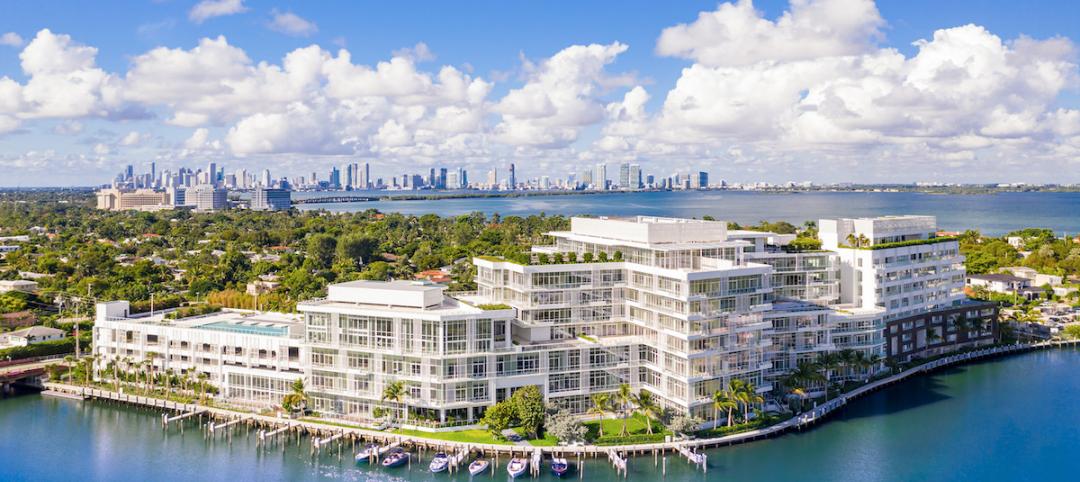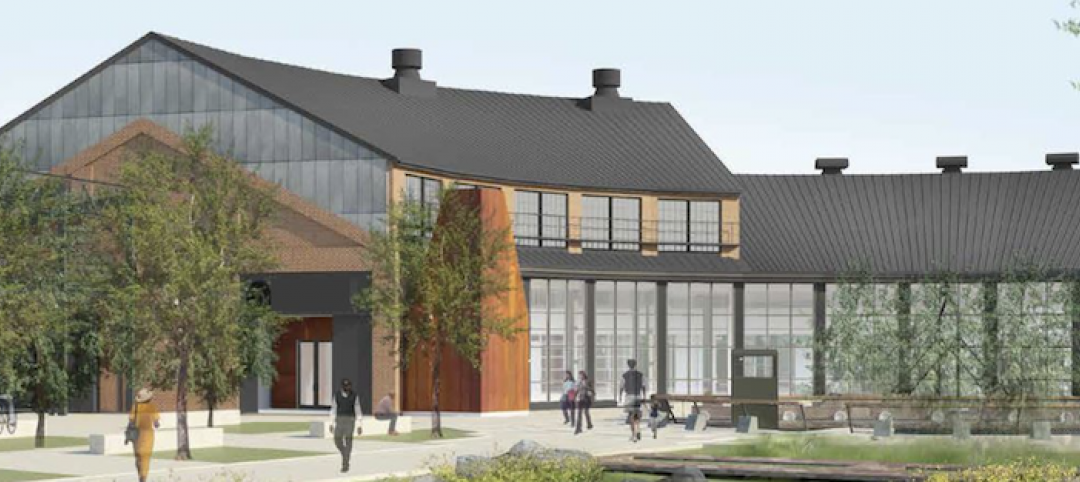McHugh Construction, one of the Midwest’s largest commercial contractors, has completed the $30 million adaptive reuse of Chicago’s historic Ramova Theatre from a long-shuttered single-screen cinema to an 1,800-person concert hall in Chicago’s Bridgeport neighborhood.
As part of the 36,000-sf project at 3510-3520 S. Halsted St., McHugh also built out space for Other Half Brewing, an independent craft brewery and taproom; Ramova Grill, an 18-seat diner; and Ramova Loft, a second-floor 200-person event venue.
JAZZ AGE MOVIE THEATRE CLOSED IN 1985
Ramova Theatre originally opened at the tail end of the Roaring Twenties and quickly became the jewel of the Bridgeport neighborhood with its neon red marquee and Spanish-inspired architecture. However, decades later ticket sales slowed, leading to its closure in 1985. Ramova’s historical and artistic significance was officially recognized with its addition to the National Register of Historic Places in 2021, the same year McHugh embarked on the building’s restoration.
“When we first arrived on the site, it was like a time capsule, with the ticket booth still in place – even with the same curtains from the day it closed,” said Andrew Totten, vice president of McHugh Construction. “But severe water damage destroyed large areas of the plaster ceiling, and the terracotta façade on Halsted Street was missing several parts.
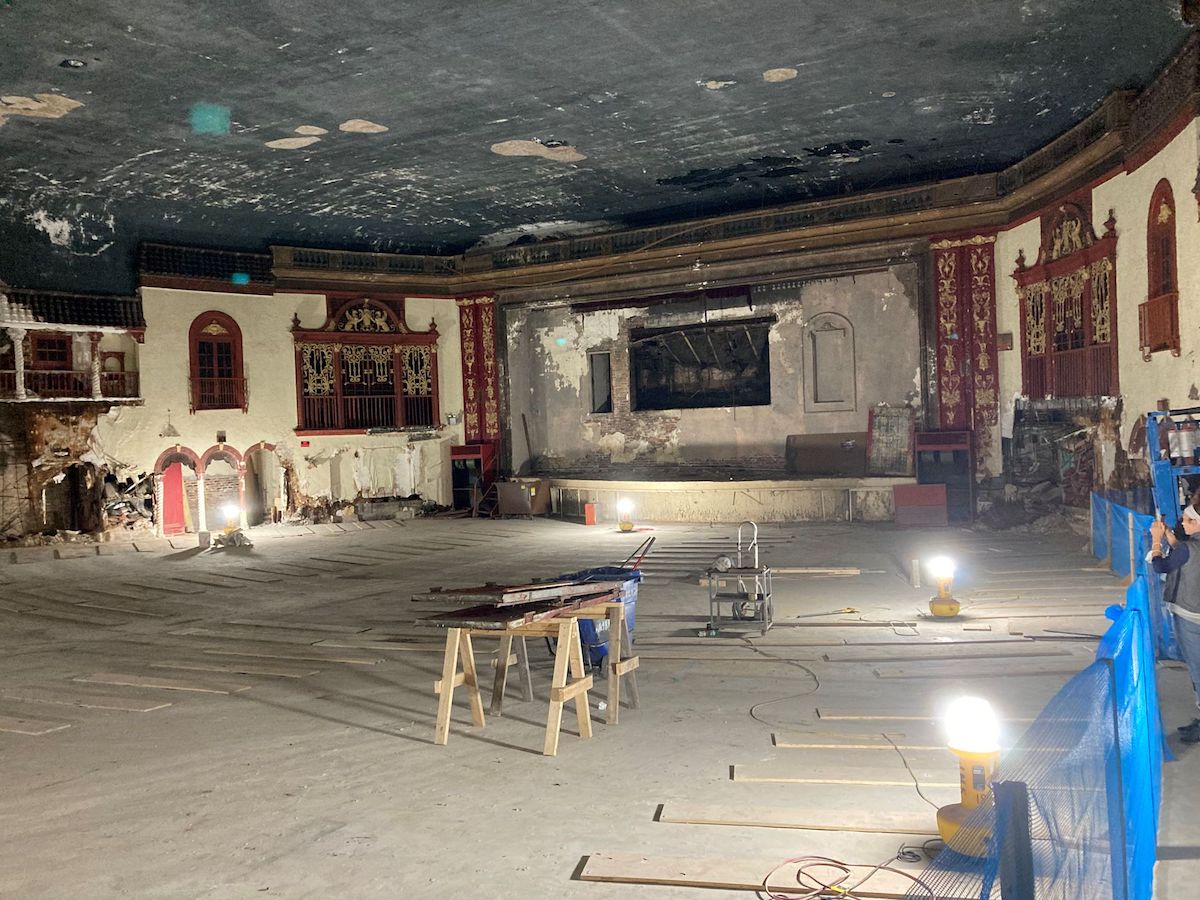
“It was the exact type of complicated project our experienced restoration team loves to bring back to life,” he added. “McHugh has been around longer than the Ramova Theatre, so we knew exactly how and when to preserve, protect, rebuild, and start anew, like when we took casts of the building’s remaining terracotta pieces and had them remade. We were honored to return the building to its 1929 glory and create a magical experience for the community once again.”
For more than two years, McHugh Construction worked closely with project architect O’Riley Office, Baum Revision, and historic preservation specialists to meticulously restore the ornate architectural details in Ramova’s original Spanish-courtyard-style lobby and auditorium.
Pale-yellow stucco-style walls, red-notched archways and columns, decorative bronze wrought-iron faux windows and balconies, a clay-tile roof line, and a ceiling painted midnight blue – all were restored to evoke the beautiful and inviting hacienda ambiance.
VENUE OFFERS UNOBSTRUCTED VIEWS OF THE STAGE
Gone are the velvety movie theater seats. In their place is a 22,000-sf, barrier-free multi-level concrete floor in front of an expansive stage. Rows of spotlights hang from the ceiling, casting multi-colored glows throughout the concert hall. The venue’s new speaker system amplifies the onstage vocals and instruments, connecting artists with the audience. Multiple bars were installed in the back of the auditorium, and a second-floor balcony was revived to offer clear views of the stage.
“The South Side of Chicago is home to the majority of local artists, but it has had the least amount of high-quality space for them to perform and hone their craft – from an aesthetic as well as acoustic point of view,” said Tyler Nevius, Ramova’s developer. “The city and the South Side needed this.”
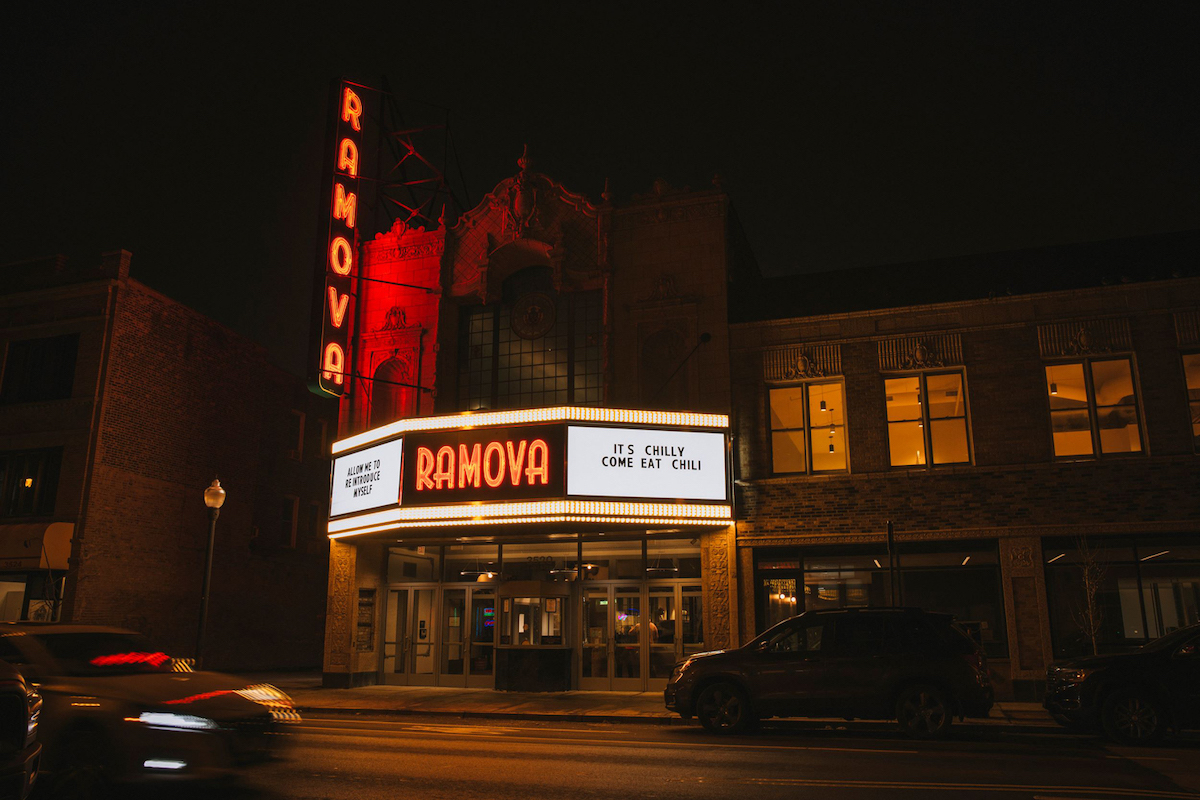
With an eye to attracting big-name performers, Ramova’s new greenroom is worthy of any A-lister, with four separate suites – each with full baths – and an office for tour managers to conduct business, said Nevius. To protect artists from paparazzi and unauthorized personnel, McHugh created direct paths for touring vehicles to arrive, unload equipment, and privately access the greenroom and performance area.
“Andy Totten and I talked with quite a few artists as part of the process,” Nevius said. “First and foremost, we wanted to create a place where they would want to come and perform. One that looks great, sounds even better, and where people can enjoy a show in comfort, which meant a five-star air conditioning system.”
HISTORIC PRESERVATION EXPERIENCE KEY TO SUCCESS
That required McHugh and its subcontractor teams to draw on decades of historic restoration experience to conceal state-of-the-art HVAC, electrical, sound, and fire protection systems within the early 20th-century fabric of the theater building. McHugh also tapped its in-house structural engineering team, McHugh Engineering Group, for expertise on structural modifications and additions to historic and complex structures.
“Multiple times we went to the McHugh office and worked on the whiteboard to understand how to fit everything into the venue,” Nevius said. “It was incredibly tight to shoehorn everything in while remembering what’s essential. For instance, it’s very important for the audience to have immediate and clear access to the bars and bathrooms.”
Hiring locals on the project was also a priority. “It was important to us to have our teams reflect the community we’re a part of,” Nevius said. “We began working with McHugh because we wanted to have local contractors and diversity on the jobsite, which can be hard to do in Chicago, where there is so much development going on so there’s competition for labor, but McHugh made it possible. We had a tremendous number of workers that live in area.”
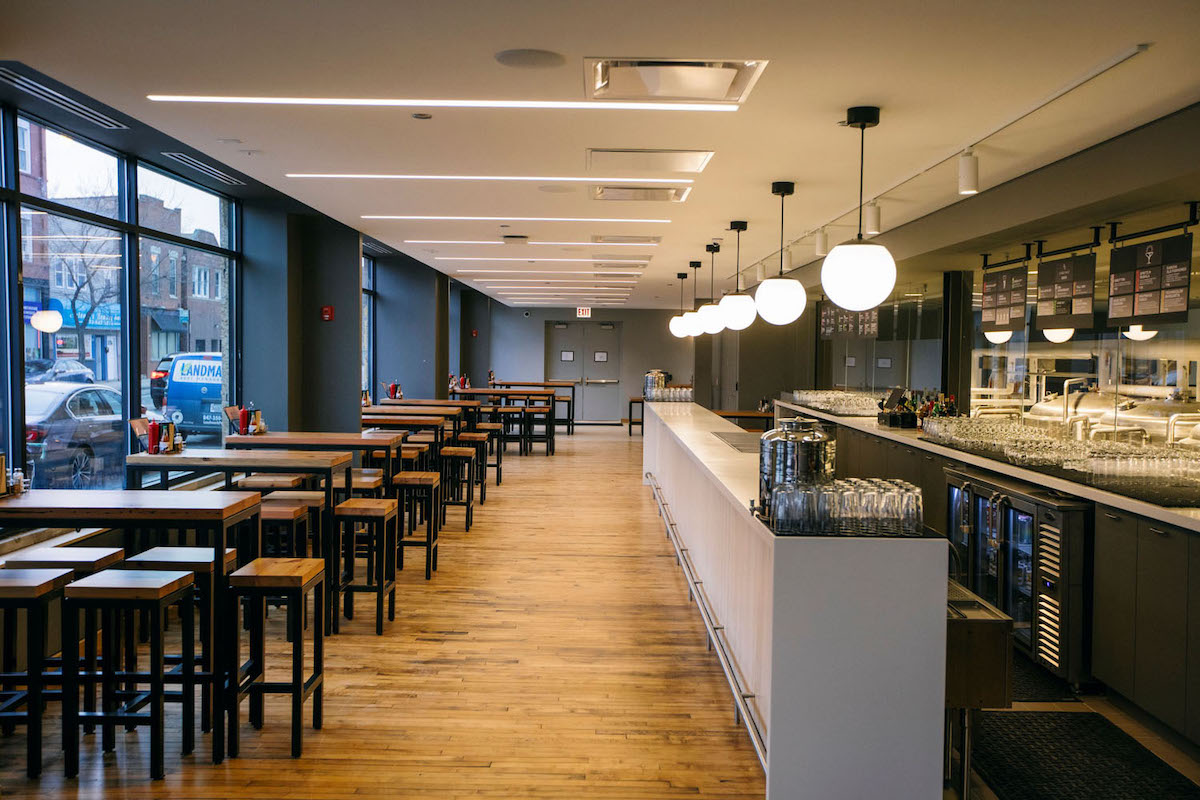
Ramova Loft, the 200-person venue on the second floor above the brewery and taproom, offers space for smaller performances by up-and-coming artists as well as events for local schools and community groups. The parking lot across the street from the building can also be used for community events such as farmers markets, and an empty lot adjacent to the south side of Ramova has been reimagined as a new outdoor beer garden.
“It’s rewarding to see all the dynamic uses come together at this one location to create an authentic community anchor,” Totten said.
The adaptive reuse project was funded by local investors, as well as big-name figures like Quincy Jones, Chance the Rapper, and Jennifer Huston. Tax-increment financing subsidies from the city of Chicago, a state grant, and a Historic Places loan added to the package. McHugh drew on its experience in Chicago public-private projects, such as 43 Green and 508 Pershing at Oakwood Shores in Bronzeville as well as Ogden Commons in Douglas Park.
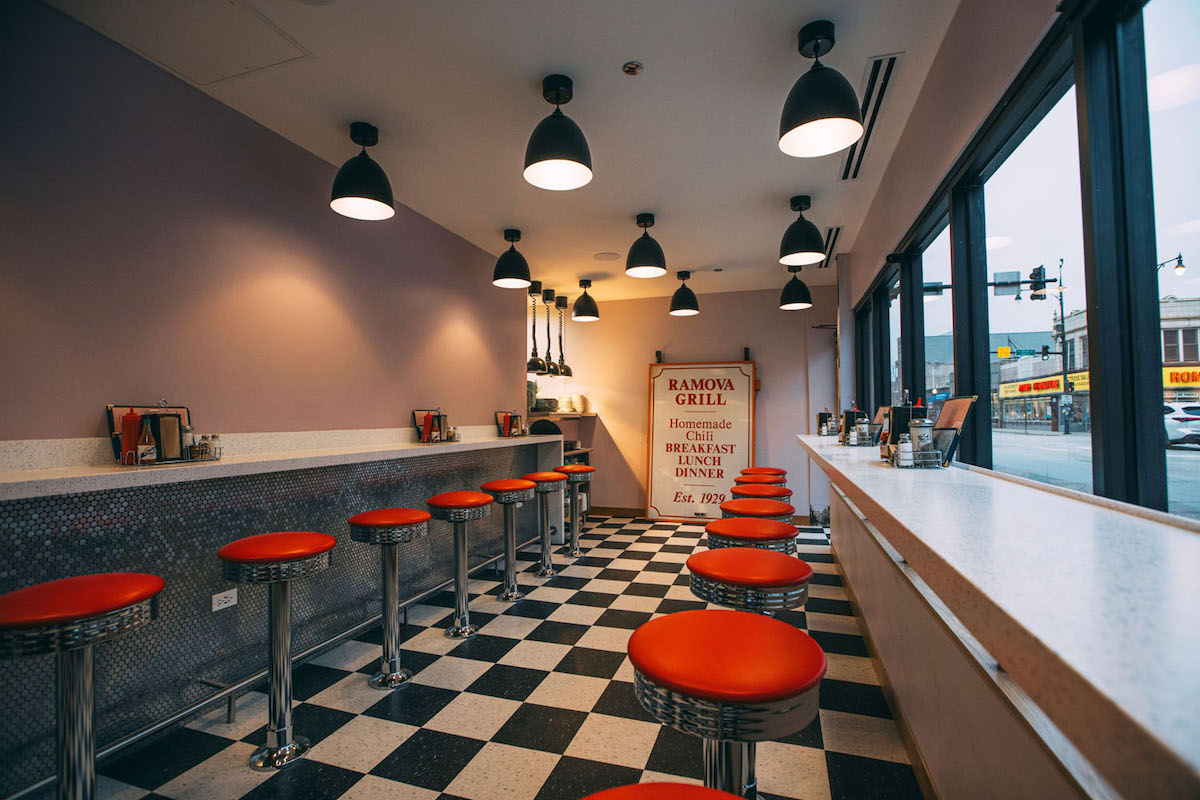
ABOUT MCHUGH CONSTRUCTION
Since its founding in 1897, James McHugh Construction Co. has earned its reputation as a builder of landmark, one-of-a-kind structures in Chicago and other areas of the country. The company specializes in managing multimillion-dollar projects, from ground-up new construction to complex renovations and high-end interiors. As a multi-faceted general contractor, McHugh constructs high-rise concrete towers, steel structures, and buildings using alternative materials such as cold-formed steel, heavy timber, and cross-laminated timber. McHugh has built and renovated iconic structures such as Chicago’s Marina City, Vista Tower, Trump Tower, Aqua Tower, Blackstone Hotel, and Navy Pier (including the 200-foot-tall Centennial Wheel and, most recently, the Sable Hotel at Navy Pier, Curio Collection by Hilton, and the Offshore Rooftop and Bar). For more information, visit www.mchughconstruction.com.
Related Stories
Adaptive Reuse | Aug 25, 2021
The first net-zero hotel in the U.S. is nearing completion in Connecticut
Solar arrays will provide the electricity for the Hotel Marcel, whose name recalls the building’s original designer.
Adaptive Reuse | Aug 13, 2021
Developers are repositioning vacant space as charter schools
Transwestern is working with the National Alliance of Public Charter Schools to provide a turnkey solution.
Hotel Facilities | Jun 18, 2021
Adaptive reuse for hospitality, with Frank Cretella of Landmark Developers
In an exclusive interview for HorizonTV, Landmark Developers' President Frank Cretella talks about the firm's adaptive reuse projects for the hospitality sector. Cretella outlines his company's keys to success in hospitality development, including finding unique properties and creating memorable spaces.
Adaptive Reuse | Jun 2, 2021
An old Ford factory in Pittsburgh is being adapted to become a biomedical research facility
This is the latest step in the city’s post-industrial resurgence.
Adaptive Reuse | Apr 15, 2021
The Weekly Show, Apr 15, 2021: The ins and outs of adaptive reuse, and sensors for real-time construction monitoring
This week on The Weekly show, BD+C editors speak with AEC industry leaders from PBDW Architects and Wohlsen Construction about what makes adaptive reuse projects successful, and sensors for real-time monitoring of concrete construction.
Adaptive Reuse | Feb 24, 2021
Adaptive reuse project brings co-living space to Los Angeles’s Hancock Park
Lorcan O’Herlihy Architects is designing the project.
Adaptive Reuse | Feb 14, 2021
Three adaptive reuse projects will add housing in Wisconsin
Historic tax credits helped pave the way, but preservation required creative solutions.
Multifamily Housing | Jan 20, 2021
Abandoned Miami hospital gets third life as waterfront condo development
The 1920s King Cole Hotel becomes the Ritz-Carlton Residences Miami in the largest residential adaptive reuse project in South Florida.
Adaptive Reuse | Dec 17, 2020
A train engine repair building is turned into an innovation center that’s part of a massive riverfront redevelopment in Pittsburgh
The adaptive reuse of the Roundhouse is the latest step forward for Hazelwood Green.
Adaptive Reuse | Oct 26, 2020
Mall property redevelopments could result in dramatic property value drops
Retail conversions to fulfillment centers, apartments, schools, or medical offices could cut values 60% to 90%.


